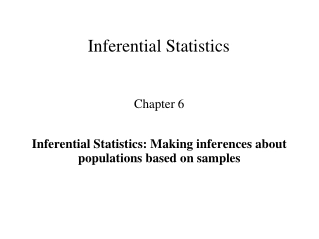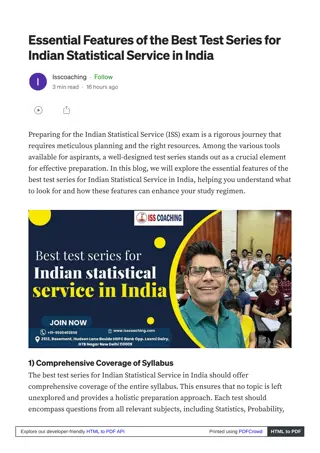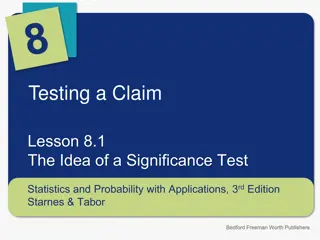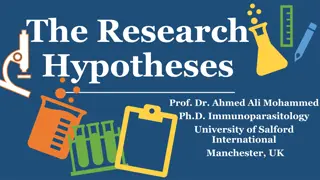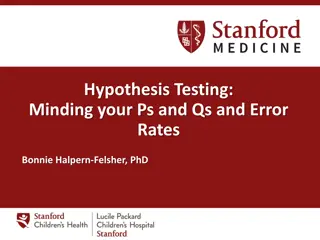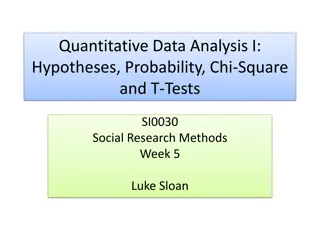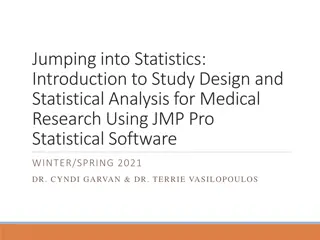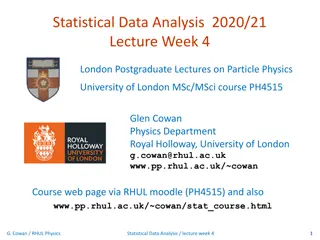Presenting Statistical Hypotheses and T-test Results
State statistical and scientific hypotheses, show experimental design flowchart, discuss exploratory and inferential analyses, interpret graphs and measures, explain p-values, and evaluate significance of results through t-test outcomes. Understand the importance of accurate representation in statistics.
Download Presentation

Please find below an Image/Link to download the presentation.
The content on the website is provided AS IS for your information and personal use only. It may not be sold, licensed, or shared on other websites without obtaining consent from the author.If you encounter any issues during the download, it is possible that the publisher has removed the file from their server.
You are allowed to download the files provided on this website for personal or commercial use, subject to the condition that they are used lawfully. All files are the property of their respective owners.
The content on the website is provided AS IS for your information and personal use only. It may not be sold, licensed, or shared on other websites without obtaining consent from the author.
E N D
Presentation Transcript
PRESENTING RESULTS
Presenting results State statistical hypothesis along with your scientific hypothesis Use flowchart to show experimental design Show how replication, control and randomization are used Show both exploratory data analysis and inferential analysis Discuss meaning of graphs and measures State level of significance in tests (p-value) State conclusions of tests State the statistical and practical significance of results Tell whether null hypothesis was accepted or rejected Statistics are meaningless if they are misrepresented or misunderstood!
Writing t-test results type of t-test An independent sample t-test was used to check the effectiveness of Drugesterol in reducing cholesterol, t(99) = 0.33, but no significant difference was found (Drugesterol M = 34; Control M = 36). degrees of freedom (n-1) p-value 0.05 means of experimental groups
Writing t-test results type of t-test An independent sample t-test was used to check the effectiveness of Drugesterol in reducing cholesterol, t(99) = 2.10, with Drugesterol associated with lower cholesterol than the control condition (Drugesterol M = 34; Control M = 36). degrees of freedom (n-1) p-value < 0.05 means of experimental groups


